The Touristique
British Eagle are not a celebrated name in the British bike industry. Search on forums for British Eagle bikes and you’ll come across descriptions such as “decent” and “competent” for the models that this brand produced. Yet, if there is a bike that stands out amongst the pages of the British Eagle catalogues over the decades of the 20th century, it is the Touristique. This was a touring bike made to rival and compete with the iconic British-made touring bike of the era, the Dawes Galaxy.
What Defines a Classic
In cycling, a lot of a brand’s reputation comes from either the quality of the bikes they produce, or the tradition and pedigree they have in professional racing. If both are combined, well then that’s ideal. You only have to look at marques such as Bianchi, De Rosa and Mercier, to understand the importance of both these factors in garnishing such a reputation, and for fostering an aura of prestige. Nevertheless, the reputation of the Dawes Galaxy, like that of its American counterpart, the Trek 520, was built singularly on the quality of build, the excellence of crafting a great hand-built bike, earning them the distinction of superiority in their field. This superiority distinguishes these bikes today as “classics”.
Reputation
Yet for all that stuff about classics, their high second-hand values and desirability for collectors on Ebay, there are some bikes that are just really damned good, regardless of the decals on the frame. This Touristique, in my view, is a great example of one of them. The Touristique is not be confused with some of the much inferior Coventry Eagle bikes, which were part of the British Eagle brand based in Newtown, Wales. Even back in 1985, the Touristique was not a cheap bike; it sold new for £283, was built with Reynolds 531ST frame and forks, and was undoubtedly the best bike this company produced. It may not have had the reputation of a Galaxy, but it was just as good, perhaps even better.
The Bike
First off, this bike was in fantastic condition for its age. I believe it was built in the late 1980’s, and everything about it had a wow factor. In truth, it would be hard to find one in such unblemished condition if I searched for another. The frame, for example, was scratch free, I mean seriously, hardly a scratch was to be found on the paint; the Shimano RX100 groupset was also in tip top mechanical order, and the components still kept much of their original finish despite the dampness of the British climate. On top of that, the Campagnolo rims, new tyres, clean and shiny mudguards, even the nice handlebar tape, spoke volumes about how this bike had been lightly ridden and carefully treated over the decades.
Riding the Eagle
On the road this bike was awesome. Simple as that. It felt strong and sturdy, but also light and responsive, so that you could get really good speed up on the flats and then slip into the granny gears for a smooth transition onto the hills. The RX100 shifting was competent and unfussy, and 21 speeds was certainly well enough gears for tough gradients. It was a quiet and unassuming bike, but very practical with its touring set-up, its 700 x 28 tyres, its confident cantilever brakes. It was the sort of bike that welcomed you to ride all day, to go further, to travel the world. Its relaxed geometry suited me perfectly, being 6’1, with a 32 inch inseam, ( meaning I have a longer torso ), it was one of the most comfortable bikes I have ridden.
The Bad?
Little about this bike was worthy of any serious criticism. It was a head-turner, even though it wasn’t flashy; its frame had a certain practicality and modesty in form, with simple lugs and little ornamentation. There’s no chrome nor stamped fork crowns, and even the decals were placed over the paint. The paint itself wasn’t the of high quality of more reputable marques, prone as it was to scratching even when cleaning with fine grade steel wool. Interestingly, the only problematic rust on the bike, which could become an issue in the future, was around the eyelets at the end of the fork blades. The paint had peeled around the holes and bare steel was becoming oxidised there, but with some preventative care it could be cleared up.
Undersold
I sold this bike for…wait for it..£120. Totally undersold. Now I realise that these Touristiques are rather sought after and appreciated by those who know their touring bikes. In this condition, I imagine this bike should have been handed over for at least £250, but there you go. Why did I sell it? Well, it fitted me well, I liked the way it rode, I liked its modest efficiency and all the practicality of the rack, mudguards, the cantilevered brakes and comfortable feel all round. In the end, I suppose what I’d prefer is a lighter touring bike, perhaps more of a fusion between tourer and racer. But that’s just me, and I wish I could ride it again.
Specs
I don’t believe there was a standard build for Touristiques. Each bike seems to have been built with what was available at the factory at that time, but many of these bikes were built with Shimano parts. I’m not sure why this particular bike had Campagnolo rims, but it was a cool touch to this build.
- 1989? British Eagle Touristique
- Reynolds 531ST Frame and Forks
- Long Pointed Lugs, Eyelets on Forks and Stays
- 21 Speed, 7 x 3
- Campagnolo Omicron Alloy 700c Rims
- Shimano RX100 Brake Levers
- Shimano RX100 Triple Crankset
- Shimano RX100 Front Derailleur
- Shimano RX100 Rear Derailleur
- Shimano RX100 Downtube Shifters
- Shimano RX100 Low Flange Hubs
- Shimano RX100 Pedals with Clips and Straps
- SR Handlebars and Stem
- Shimano Cantilever Brakes
- Original British Eagle Saddle


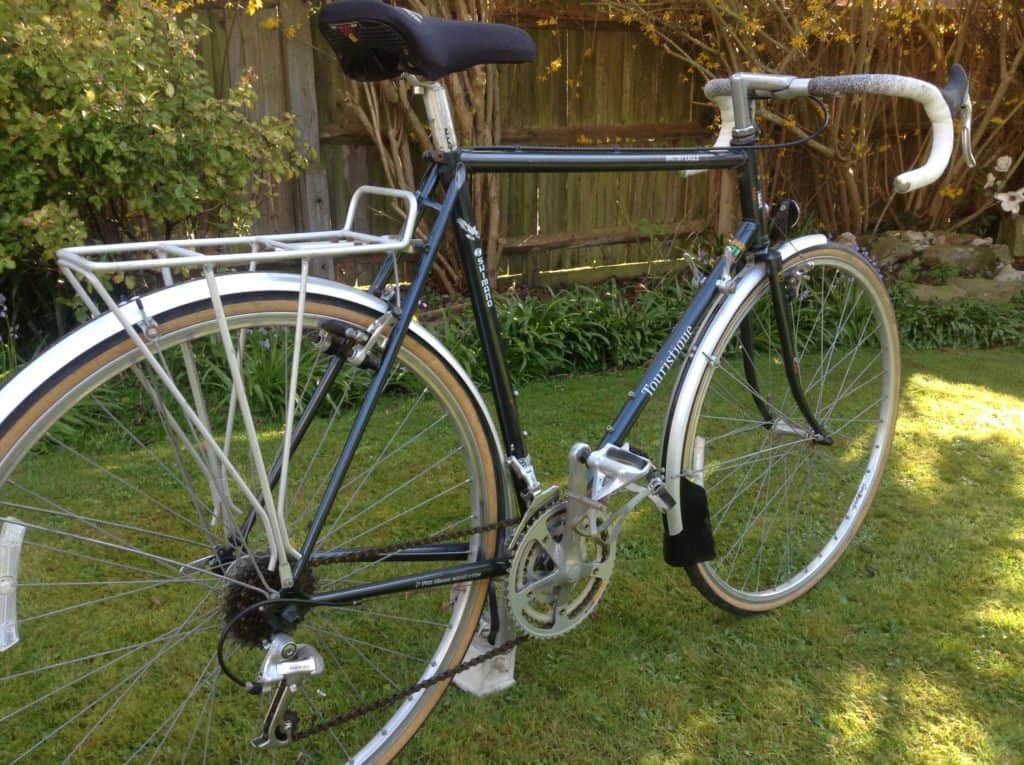
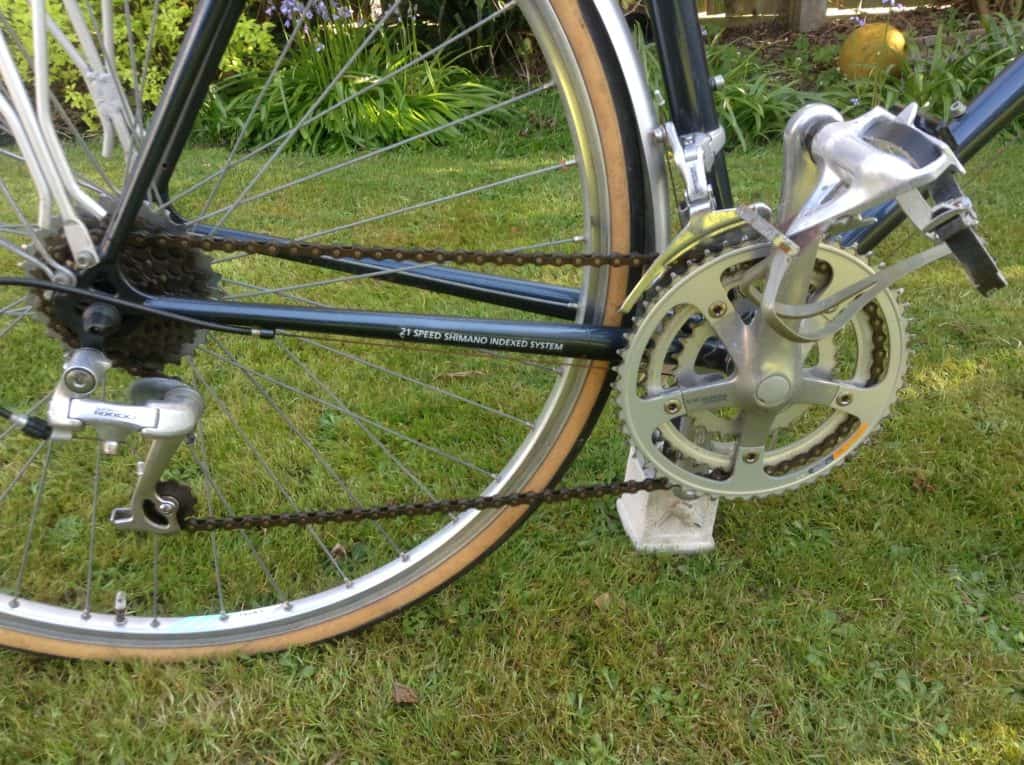
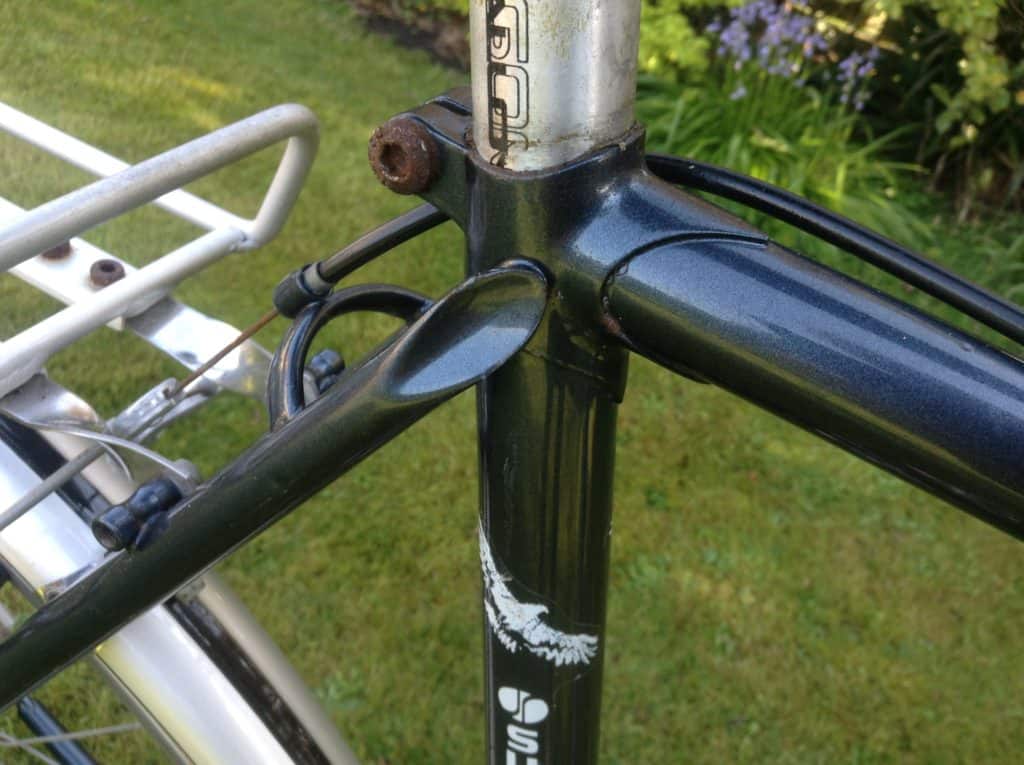
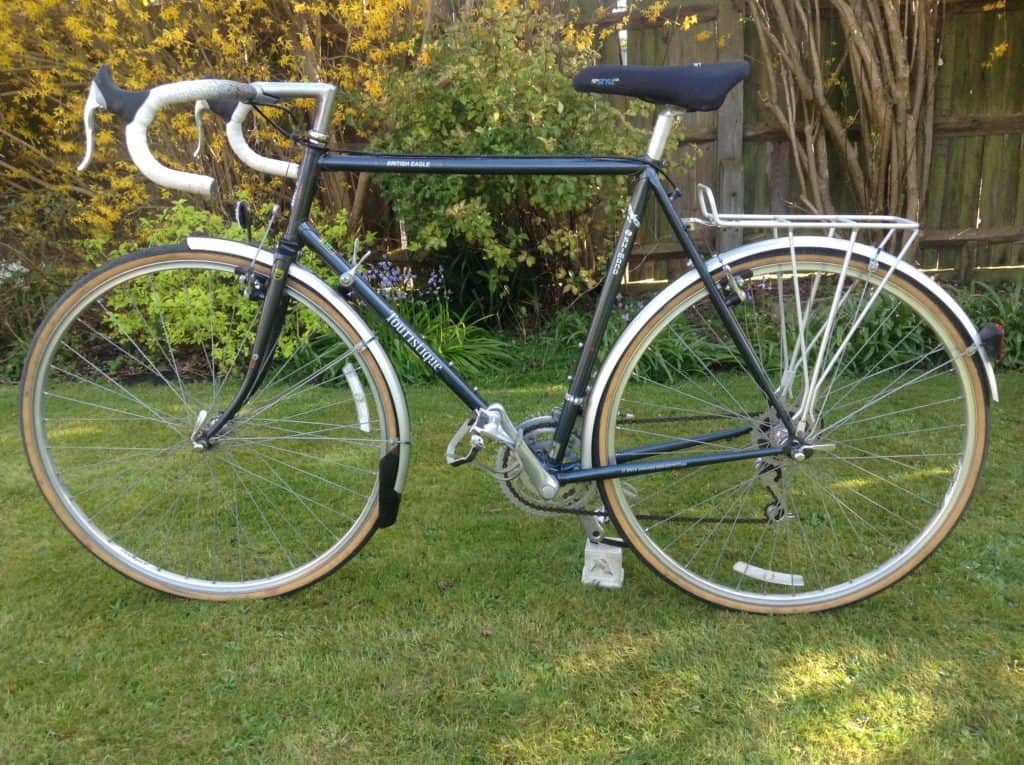
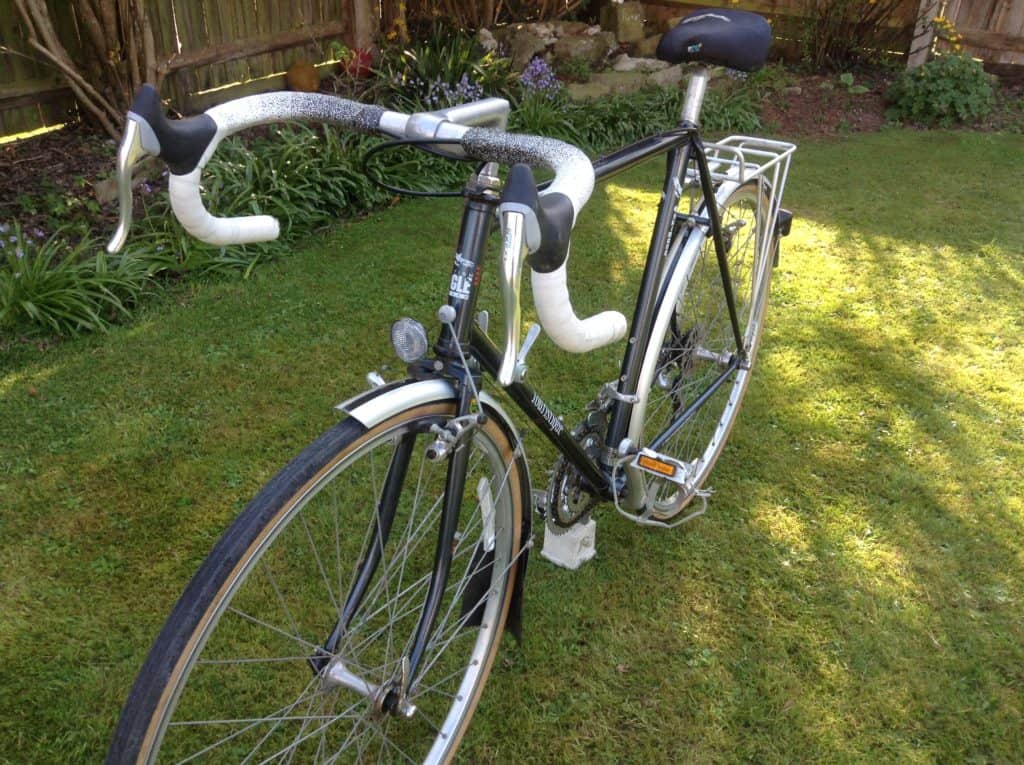
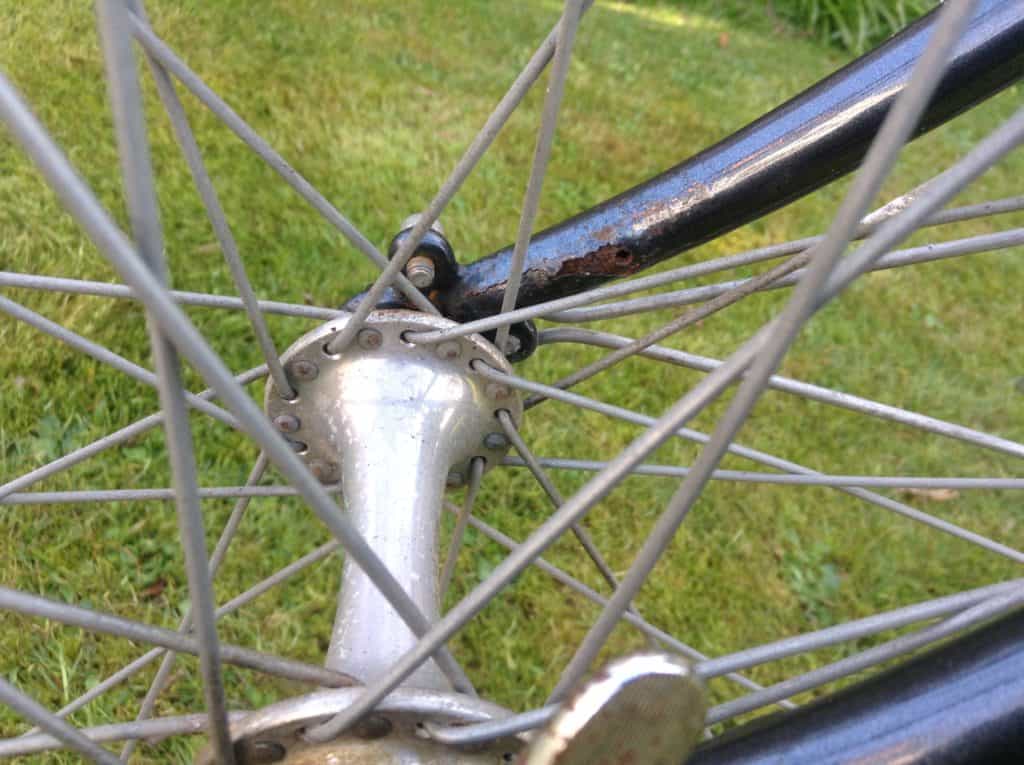
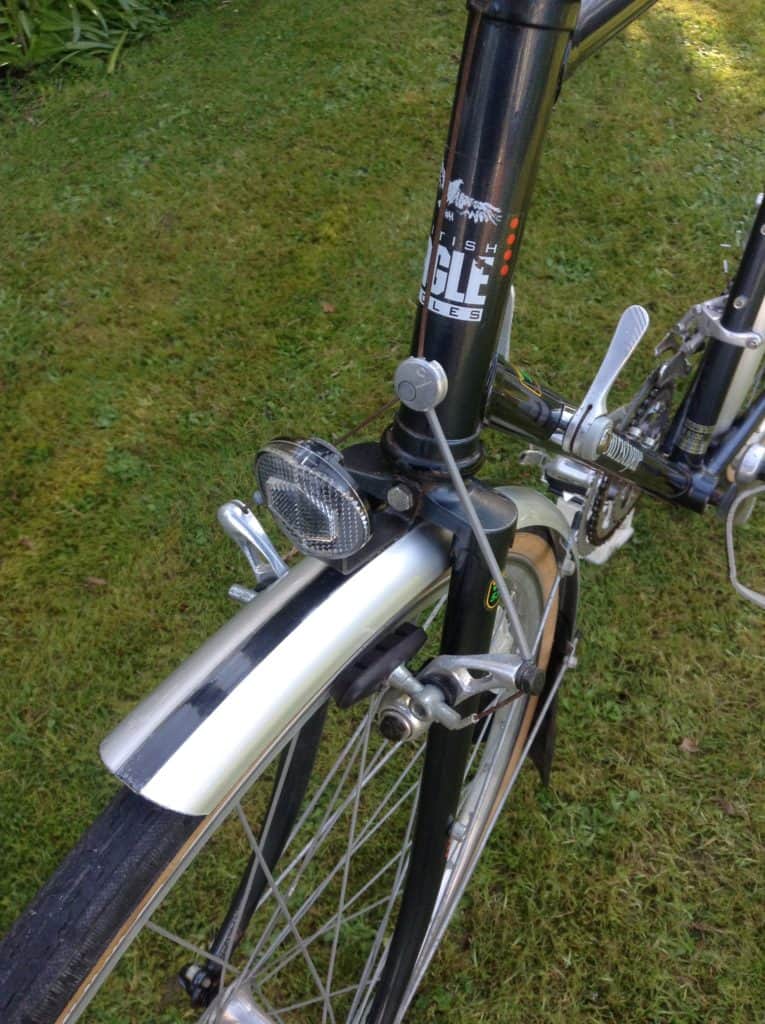
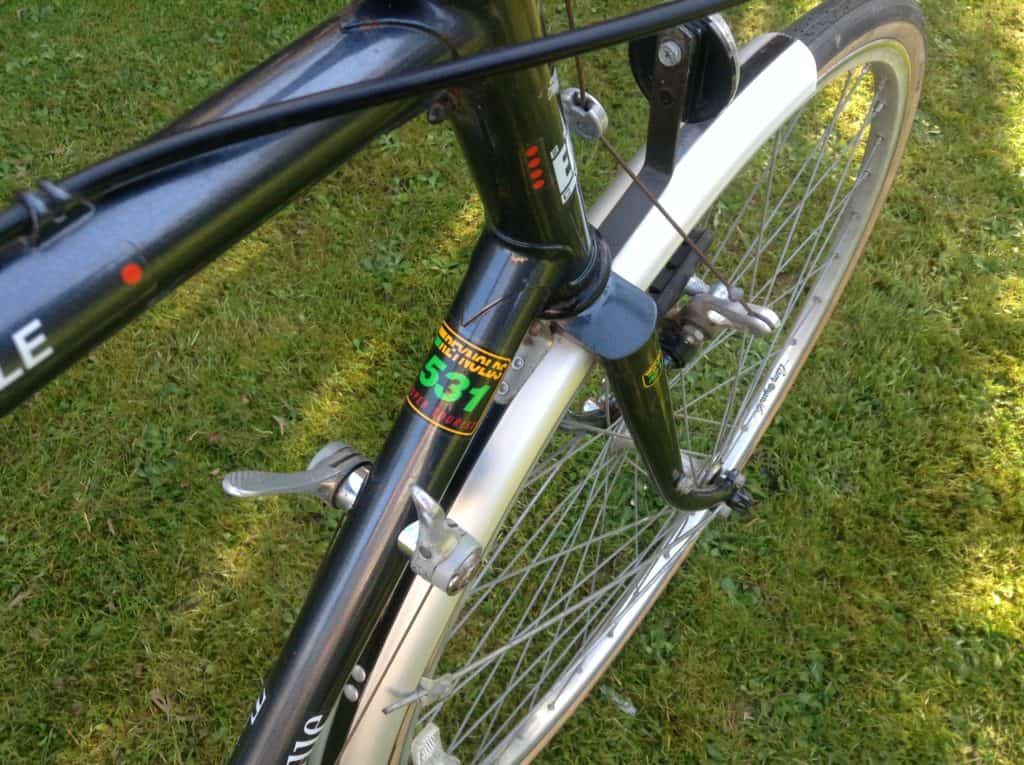
I agree with your assessment of this bike. It might be a little later than 1989 given the RX100 groupset; definitely one of the last grey ones which were produced up to 1993 I think, although I’ve never seen reference to a grey one after 1992. A small batch of metallic red ones with the RX100 groupset were sold as part of the 1995 brochure and that marked the end of the Touristique I believe. I have one of the red ones and I get the feeling that it was part of a production run to use up the last of their 531 tubes sets or spare pre-built frames. Lovely bike though and I won’t be parting with it.
Thanks for visiting , John, and for your insights. I imagine a red Touristique must be a good looking bike, and I understand why you won’t be parting with it. This one was one of the best touring bikes I’ve ridden. Cheers, Dominic.
I managed to come upon a sorry excuse for a bike recently. It was a complete mosh mash of components, straight bars. Even the wheels were odd. Normally not worth a second glance, the Reynolds 531ST sticker caught my eye.
The Touristique frame that was hiding underneath the grime is lovely, but unfortunately has more chips than the local friary! Not for the purists, but I decided to use it the heart of a gravel bike build. The frame has been fully stripped, sanded and primed and is now waiting for a top coat in a very similar colour to the original grey/blue. Components are what I have spare but include a Campagnolo double chainset, Cinelli Record stem & bars, Rolls saddle, Deore XT rear mech, Dura Ace 7400 8 speed downtube shifters and Shimano 600 brake levers. The cantilevers are Avid shorty 6 and shorty 4 and the wheels are Mavic MA3s on Quando hubs that are silky smooth. I cannot wait.
It’s just a shame you cannot get replacement Touristique decals of this type anywhere!
Hi Chris, thanks for the comment. I’d love to see a photo of your completed bike, it sounds like you’ve given it a new lease of life. I take it that the original owner swapped out most of its parts, making it a custom build but not really taking much care of it. Shame about the Touristique decals, someone needs to create new copies of them..
https://forum.cyclinguk.org/viewtopic.php?f=40&t=128757
23″ 1987 British Eagle Touristique, looks nice and as the ad says “Bargain of the Year. (so it would seem !)” going for £50.
That bike might be a nice replacement? It’s not mine, just saw the ad and having read your article thought I would pass on the link.
Wow, someone got a great deal. Thanks for sending the link, I don’t imagine there’ll be another at that price for a good while..
In going to look at a grey eagle for $100 canadian it needs work intriguing bike none the less
Good luck, it’s well worth investing in one if it can be restored..
I bought my touristique by accident in a bike charity shop and did a 1200m camping JOGLE on it. It’s a beautiful ride and can cope with the load even on forest tracks. Although it’s a little frisky with my 4 year old on the back.
I’ve upgraded with handbuilt wheels and 105 hubs and a SPA tripleset; Brooke’s B17 of course. Otherwise it’s the original bike. I’ve no idea how old it is; it’s burgundy.
I’m pleased to see there are still a few of these Touristiques out there and going strong. I have an original I bought in 1986 new which took me around the Dordogne last year. It is in great condition. Mine is fitted with Suntour mech and Strong light chainwheels. However I have a bit of adverse wear and tear on the thermoplastic mudguards with black stripe which are identical to those on shown on your picture. I have been looking for a replacement set. Are they still available or is there very something very similar around?
Thought I’d share the a pic of the bike
That’s a beautiful bike, thanks for posting. Not sure where to get those mudguards, though.
Hi there, a little off topic but I’m grasping at straws.
I’ve spotted a BE Ridge for sale nearby – looks to be 531 – but I can’t find a word about them. By any chance does anyone know something about this model? Or know where I can find archived catalogs for BE?
Sorry to take things off topic, I’m just so curious now.
Regards, Forrest.
Thanks Roger. I have a Coventry Eagle Touristique bought secondhand at York Cycle Works in the same colour scheme in 1988 and still going well. It’s had a couple of cheap resprays since and I look forward to getting the frame refinished based on your pic.
i have british eagle touristique cycle, i need know the best way to repaint my frame
Hi I’d ask on cycling uk forum
But to be brief
Cheaply – spray can or brush enamel.
Durably – epoxy paint or powder coating
Expensively – take it to classic bike restorer like Ellis Briggs mercain etc.
Cheers James
Hi
Just thought I’d add a comment to say that I’ve had a Touristique since 1991. Last year I put on new wheels, chain and cassette.
Chainset is original 28,38,48 biopace ring. Everything else is original including saddle.
It’s everything the article says..and because of that, I’m really struggling to find a modern equivalent. Nothing so far matches smooth running on roads and yes, it is smooth, or spring in frame with 32 spoke wheels. It looks old style now, but why pay £2k for something heavier and only just as nice but not better.
Ps..I’ve done LEJOG, C2C, France, Outer Hebrides, most of N500, Peak District, Lakes, Yorkshire, Welsh border- Wye-Wenlock Edge-Chester plus a few thousand more miles here and there on it – so it’s not been hanging as a trophy in the garage.
It’s amused me reading this page. I bought a touristique many many years ago. Frequent weekend trips daily 25km Aller return commute, a big self supported solo source to estuary loire valley. Then I put it in the shed and got the mountain bike bug. (Ultra distance running was my sport) Well I’ve just given my touristique to a local bike shop to give it a once over thinking it maybe usable to re get fit this winter before buying a newer bike for my saint malo nice trip next year. It hopefully will pass its fit to use once over and I will be using it for the trip ha ING read the above. Whe I bought it I new nothing about bikes, spoke to the people in a bike shop in Fenton stole on trent, they advised me. Seems like good advice was given. Anyway am happy I came across this page happy travels.
Thanks for your interesting story of your Touristique. Good luck with your rides in France next year!
This is what a 1988 off-white Touristique looks like with its original venetian effect decals (my favourite). Indexed Suntour Accushift and anodised Rigida rims. The only Shimano components fitted were the AT50 cantilever brakes.
closer..
Beautiful version, love the colour. Thanks for posting!
Having only just come across this site, I do agree with lots of the comments concerning ride quality….I’ll now go and wake mine up from its long sleep in the garage !
That’s an awesome Touristique, it looks in great condition too in full apparel. Thanks for sharing the photo. Cheers!
No problem, I also have another one that I’m working on….when I get some free time !
A recent arrival here, and I’m guessing it could be the smallest Touristique frame produced at 19.5 inches, was informed by the original (and only) owner that it was one of the first 25 produced.
Wow, one of the first 25 produced..that’s a historic bike you have there. Thanks for posting it, really interesting for all Touristique fans to see it. Cheers
Today riding my NEW TREK FX3, I was wondering if should stay with my Touristique since hills seemed more comfortable riding that.
But think I am preferring handlebar gears!.
Was my bike since 1992 & enjoyed LEJOG, CUBA as well as many Endurancer rides!
But have to remember AGE counts too
Not as FIT now
Thanks for your comment, sounds like you’ve had many great rides with your Touristique. The Trek may be easier to ride but the Touristique is always worth keeping and riding from time to time! Cheers!
Having bought my touristique in 1992 I am now sadly parting with it as I have run out of space to store it. It’s listed on ebay today. Most of it is original though I did put some new wheels and tyres on it recently. Sadly the original mudguards fell apart snd it needs a new set to finish it off. It served me well commuting around London and the odd touring trip to France. It has always been a great ride. When I bought it it was a bit cheaper than a galaxy but very dkmilar spec. So at the time it seemed like a good deal.
Sad to hear you parting with your old Touristique, hope you make a good sale, a bike like that should be a cool project for someone. It is a classic, after all.
I’m trying to give away a BE Touristique frame. I live in Edinburgh…. Any suggestions on which groups might be interested. (The rest of the bikes been butchered and gears are rusty). But frame ok.
Hi, sorry for the late reply. If you still have it, I’m sure there’d be lots of collectors and bike fans interested in a Touristique frame. I suggest putting it on Gumtree and I’m sure you’d get lots of interest. Thanks!
Hi all, great article on the Touristique. After a bit of searching I’ve managed to get hold of one! Kindly packaged and sent down from Scotland to Oxfordshire, mainly Shimano RX100 with some Deore bits. Couple of things to sort out, but tried it at the weekend and it performed well in some really wet conditions. Will try and get a pic up soon. Seems to be an unusual frame size (24 inches seat tube), but can still ride it ok.
Would love to see some photos, sounds like you’ve found another classic Touristique! Safe riding!
Hi all, just this pic for now as the bike is at my folks. It’s in really good condition overall.
Here is the only pic I have at the moment, it’s in really good condition overall.
That’s a super project, the frame looks in good condition. Thanks for posting!
I was gifted a BE Touristique by a friend. I started cycling to work on it two months ago and loving it. The only thing is, my friend told me the chain tends to slip – as it turns out something of an understatement. I’m pleased to own one of these, and would love to know more about how to restore it to complete working order.
Hi, thanks for the comment. Is it an old chain and is it the correct one? I think you just have to through the process of testing one thing at a time: chain, cable, check your shifter for any slippage, freewheel, chain ring, but also clean and lubricate each component. Hope you solve the problem!
An 82′ touristique took me on a lap around Australia in 2012. Here are a couple of snaps of it on a 700km stretch of dirt highway in the north-west https://imgur.com/a/fX4R6ZA
The amount of abuse which my B.E.T.ty took was rude given the build pedigree and her riding comfort.
I have a touristique which I bought with some inheritance in 1984/85. Best investment I ever made.
I get the feeling these bikes are really something special. I regret I sold mine, perhaps I’ll get lucky enough in the future to own another. Cheers.
@James H.
Sorry, cannot recommend Ellis Briggs at all for any type of work now. Seen too many examples recently of people sending Paul Gibson their bikes and either spending months/years fighting to retrieve or not getting back at all.
@VC many thanks for this thorough article. I had my eye on a Touristique frame but was unsure where to place it in the scheme of things (despite the 531ST badge giving some sort of clue). Alas, for the work that needs doing, it’s a tad overpriced but this has helped me avoid a costly money pit, so thanks again!
Hi, thanks for the info and glad the article was useful to you. If you can find a complete Touristique at a good price and in decent condition, I’d definitely think it’d be a rewarding project. Cheers!
Touristique
I bought my BE Touristique back in 1992, gun metal grey version, a friend has the same model as well, to date up till i walked up the road from work (bike shop near Mornington Crescent London), i had not seen another like what we both had. It was unmistakable, the dropped handle bars with the white tap it just stood out from the crowd. When i approached the owner he wanted 300 of the kings finest, i was tempted , cant say i wasnt, but who needs two BE Touristique’s, seems as of today its sold, not there anyway, someone has bought an iconic bike i hope they know what they have bought!
Meanwhile, in the years leading up to today, my Touristique has been the smoothest, most beautiful bike to ride, in fact i rode it till it basically started to fail/ fall apart. Then it was placed in the garage out of sight out of mind, until recently, i have stripped it down (much to the wife’s disgust in the lounge) and its now going off to Mercian for a strip down and a full respray thinking Flamboyant Blue or Electric Blue), new decals, new wheels and new group set and off the eagle will fly for another 20 years. Hopefully will be able to post pics once project is complete.